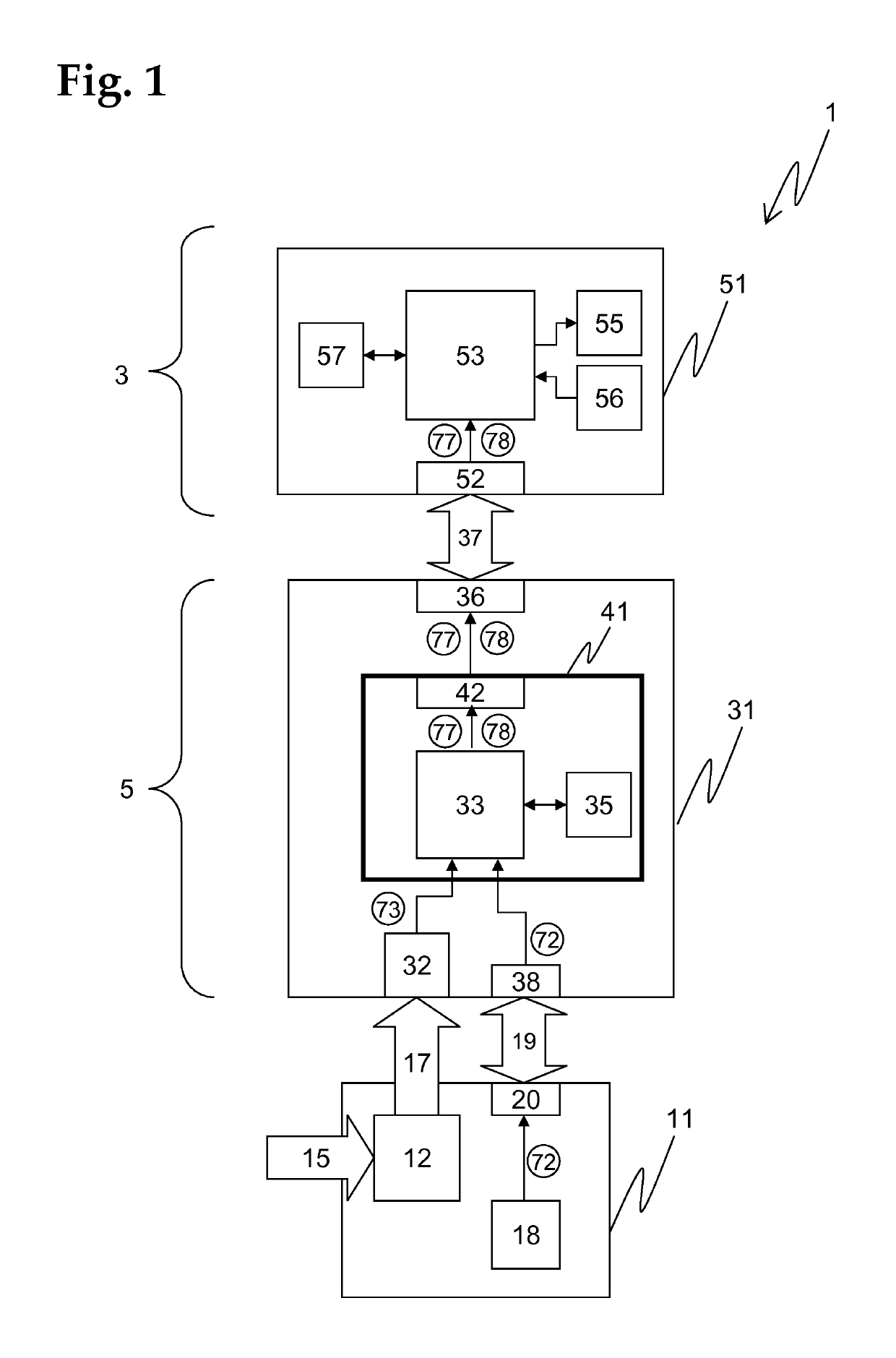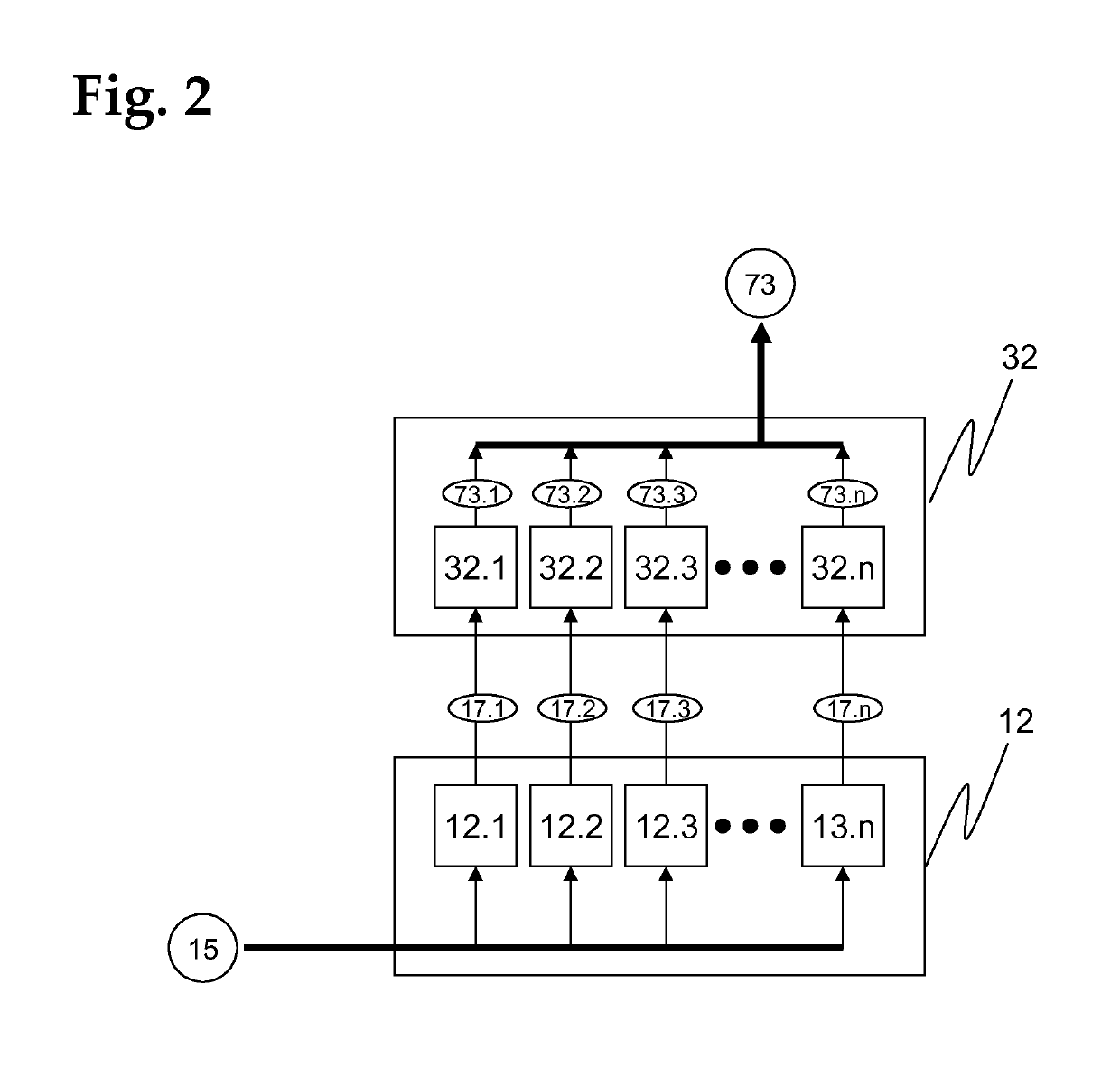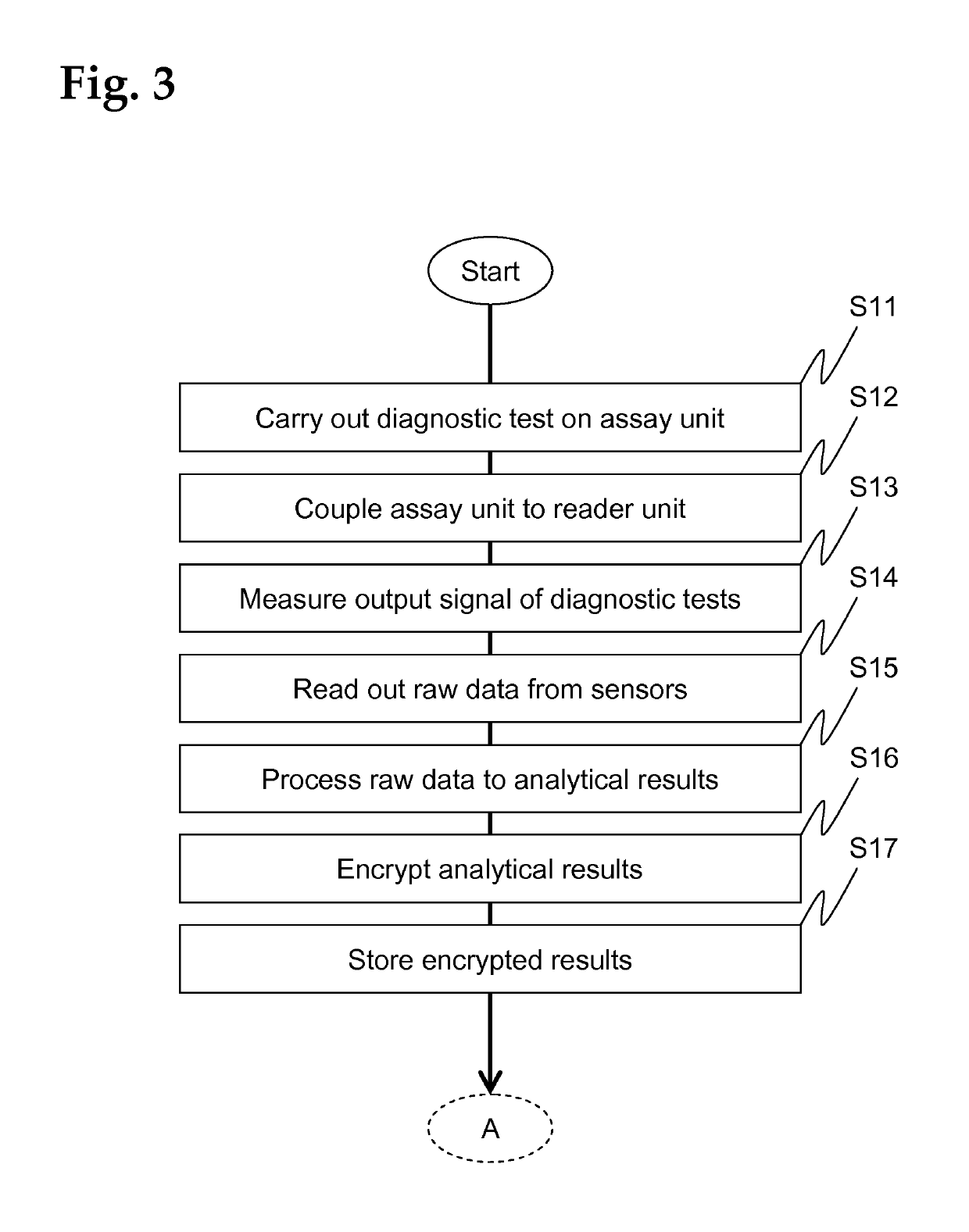System and method for protecting and controlling access to analytical results of a diagnostic test assay
a technology of diagnostic test and access control, applied in the field of system and method for protecting and controlling access to analytical results of diagnostic test assay, can solve the problems of requiring well trained personnel for operation, lateral flow test is usually limited to detection, and the cost is high, so as to protect the privacy of patient's personal data, convenient
- Summary
- Abstract
- Description
- Claims
- Application Information
AI Technical Summary
Benefits of technology
Problems solved by technology
Method used
Image
Examples
Embodiment Construction
[0171]Certain aspects of embodiments disclosed herein by way of example are summarized below. It should be understood that these aspects are presented merely to provide the reader with a brief summary of certain forms that any implementation disclosed and / or claimed herein might take, and that these aspects are not intended to limit the scope of the present disclosure. Indeed, any implementation disclosed and / or claimed herein may encompass a variety of aspects that may not be set forth below.
[0172]Components that are identical, or that are identical at least in terms of their function, are designated below by identical or at least comparable reference numbers.
[0173]An advantageous embodiment of a diagnostic system 1 according to the invention is schematically shown in FIG. 1, comprising an assay unit 11, a reader unit 31, and an evaluation unit 51, which are functionally coupled.
[0174]The assay unit 11, which is advantageously realized as a consumable unit, comprises a test module ...
PUM
 Login to View More
Login to View More Abstract
Description
Claims
Application Information
 Login to View More
Login to View More - R&D
- Intellectual Property
- Life Sciences
- Materials
- Tech Scout
- Unparalleled Data Quality
- Higher Quality Content
- 60% Fewer Hallucinations
Browse by: Latest US Patents, China's latest patents, Technical Efficacy Thesaurus, Application Domain, Technology Topic, Popular Technical Reports.
© 2025 PatSnap. All rights reserved.Legal|Privacy policy|Modern Slavery Act Transparency Statement|Sitemap|About US| Contact US: help@patsnap.com



